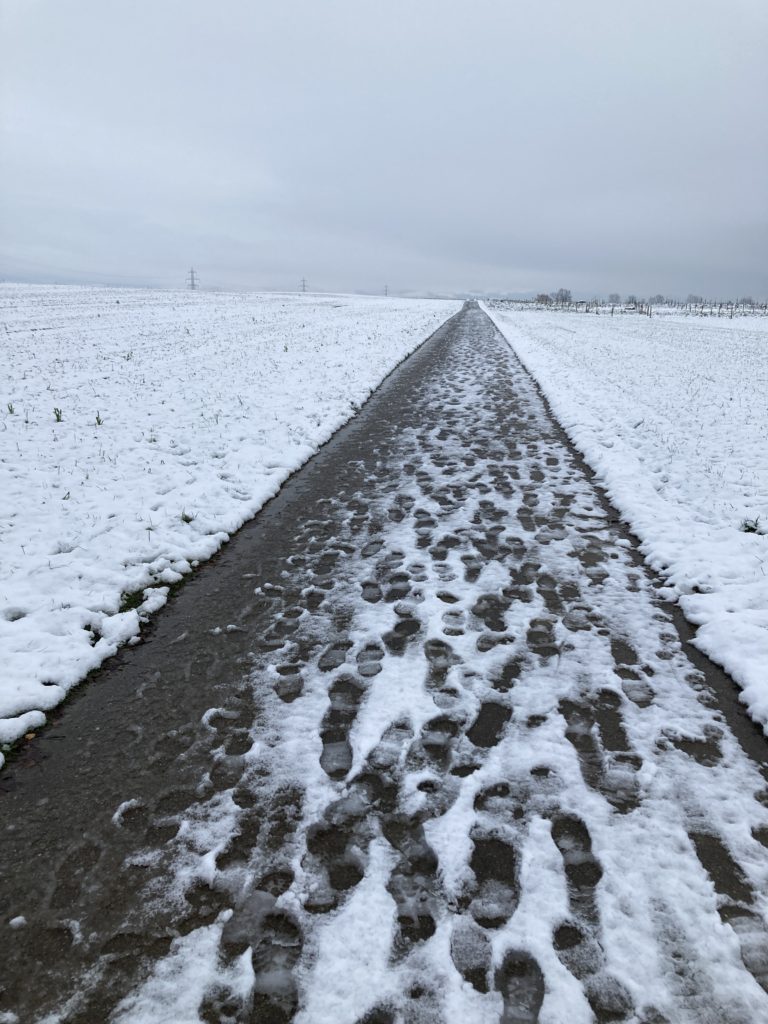Walking from Village to Village, and Village to Town
The conversation is too often about designing cities to be car-free, but I would argue that designing the countryside to require less frequently would be more advantageous. The reason for this is that walking from village to village, and from villages to towns eliminates the need for, and appeal of the car. If the need for a car is mooted by making the sides of roads pleasant for pedestrians and cyclists, we reduce the allure of the car.
From March to June I walked around one million eight hundred and fifty thousand steps between villages according to the pedometer++ app. In that time I have walked through rain, wind, mud, and streams. In the process, I have come to the conclusion that the grass on the sides of roads needs to be cut more frequently.
When the grass at the side of the road is not cut we are forced to walk through increasingly longer grass from week to week. On a dry day this doesn’t matter so much but on a rainy it does. On a rainy day if the grass is cut regularly you’d get wet from the rain over a period of time.
When the grass is long you get soaked within a few steps. Rainwater goes from the grass, to your shoes, and onto your trousers, and other time it works its way down to the soles of your feet and up your trousers, through to your t-shirt and beyond. By the end of a walk you’re drenched through.
If the grass had been cut you’d be wet, but it would take longer. If you’ve been drenched from walking through long grass frequently enough the idea of getting soaked yet again encourages you to walk on the side of the road, rather than the grass bank. This affects traffic fluidity because a pedestrian on the road has to be avoided. If they’re in the grass then the problem is resolved.
When I drive along narrow roads and I see pedestrians or cyclists I slow down to the speed at which I would like to be passed, if I was the one walking. This is also true of cyclists. Drivers seldom understand the effect that their speed and proximity has on vulnerable road users.
When you’re walking between villages you sometimes have to walk on the road because hedges and other vegetation make it impossible to walk off of the road. In some cases, when walking at the side of the road I have come across thorny plants. Walking into them, without knowing that they were thorny is a one time mistake. After that you walk on the road.
We could walk along agricultural roads but there are two issues with agricultural roads. The first is that people drive cars down them at speed so it’s no better than walking by the side of the road, but the second is people with dogs.
When you’re afraid of dogs it’s more interesting to walk in the grass by the side of the road than agricultural roads.
I should add some context. I walk along the sides of roads, rather than agricultural paths because I like to walk for two to three hours at a time. To walk for two to three hours I need at least ten to fifteen kilometres of paths and routes to walk along. I could get in a car, drive for an hour or two and walk in the mountains, but over the last two years I have found that I can get the same workout without the use of the car.
I have found that there are plenty of nice things to see, without burning fossil fuels.
The reason for which people do not walk or cycle between villages, and from villages to towns, is that they see roads as dangerous. Drivers too often, see pedestrians and cyclists, as a nuisance. If the grass at the side of the road was kept short enough for pedestrian trails to form and be used, then the need for cars would be reduced. If the need for cars between towns and villages is reduced, so is the need within towns. Urban planners, before removing cars from towns, should think about getting people into the habit of walking between villages and towns. If you get people out of that habit, then it is easier to get them into the habit of catching the train.





